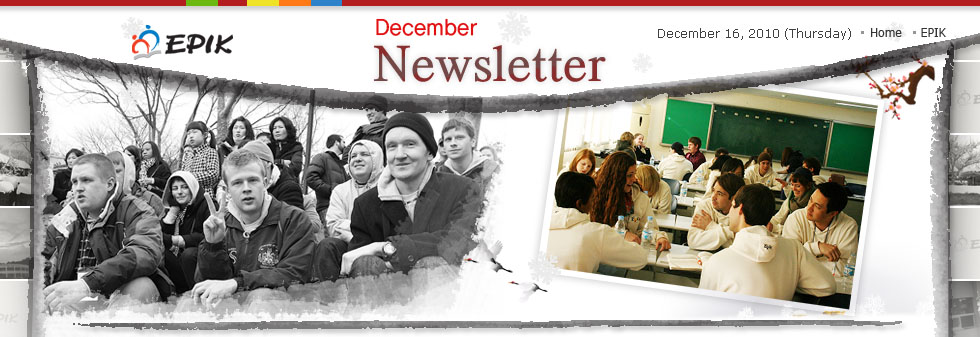|
The three most important ingredients in teaching
|
|
|
Kyung Hee Lee
Education Researcher, National EPIK Head Office
|
|
This is a brief review of what I observed at the EPIK teachers¡¯ lesson presentations during the November Orientation at NIIED. The orientation was held for six days from Nov.25~Nov.30. On the last day, all the EPIK teachers should participate in lesson presentations. Thus, the teachers made lots of efforts in developing their lesson plans in spite of their busy schedule.
|
|
Luckily, I had the privilege of watching the class 2-1. Six teams taught the mock-up class, and each team consisted of three or four members. Even though I can¡¯t elaborate the presentations one by one, all the teams were very enthusiastic and were involved in their roles eagerly. The lessons were full of brilliant teaching ideas, techniques and various teaching aids.
|
|
Thus, let me introduce a few techniques they adopted, so that all of us, as English teachers, can share them in real classroom settings.
|
|
At first, I was very impressed with the idea of ¡®Kung-Fu Punctuation¡¯. When the students (the audiences acted as students) ended the sentences, they had to make a sound and a motion of ¡®Kung-Fu¡¯. The sounds and motions were so funny that the students were easily motivated and the participation was very active. How to motivate the students is still the key issue for all of us to remember in preparing and organizing lesson plans. I believe motivation is the first step to a good teaching.
|
|
Secondly, one team reached out to me strongly. As you know, role play is very common and mostly useful in improving communicative competence. Generally speaking, teachers tend to be just watching the students in front of class, without doing anything during the role-play. But the team teachers walked around and around, helping the students, doing the activities together, and explaining repeatedly. Though this may seem easy, the effect is extremely effective, for the students are reinforced by the teachers¡¯ love and concern. I suppose immersing in the students is the second.
|
|
Lastly, I¡¯d like to mention one more team. They dealt with a very simple and familiar topic, shopping. But their ideas were clear and logically presented. I¡¯d like to put an emphasis on the term, ¡®logic¡¯. The procedures were so coherent that the students seemed to get to the lesson objectives automatically. What I realized is that a lesson with various kinds of teaching materials, PPTs and video clips can never be successful, if there¡¯s no ¡®logic¡¯. It might end up with students being confused without any outcomes. We teachers should ask ourselves over and over, why we¡¯re going to use this technique, that worksheet, the role-play and so on. I think a well-organized lesson is the best.
|
|
Once again, I¡¯d like to appreciate the EPIK teachers¡¯ devoted presentations. I¡¯m sure the Korean students and Korean teachers will be satisfied with the EPIK teachers.
|
|




